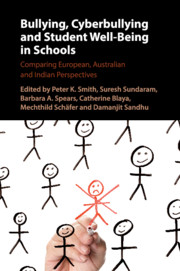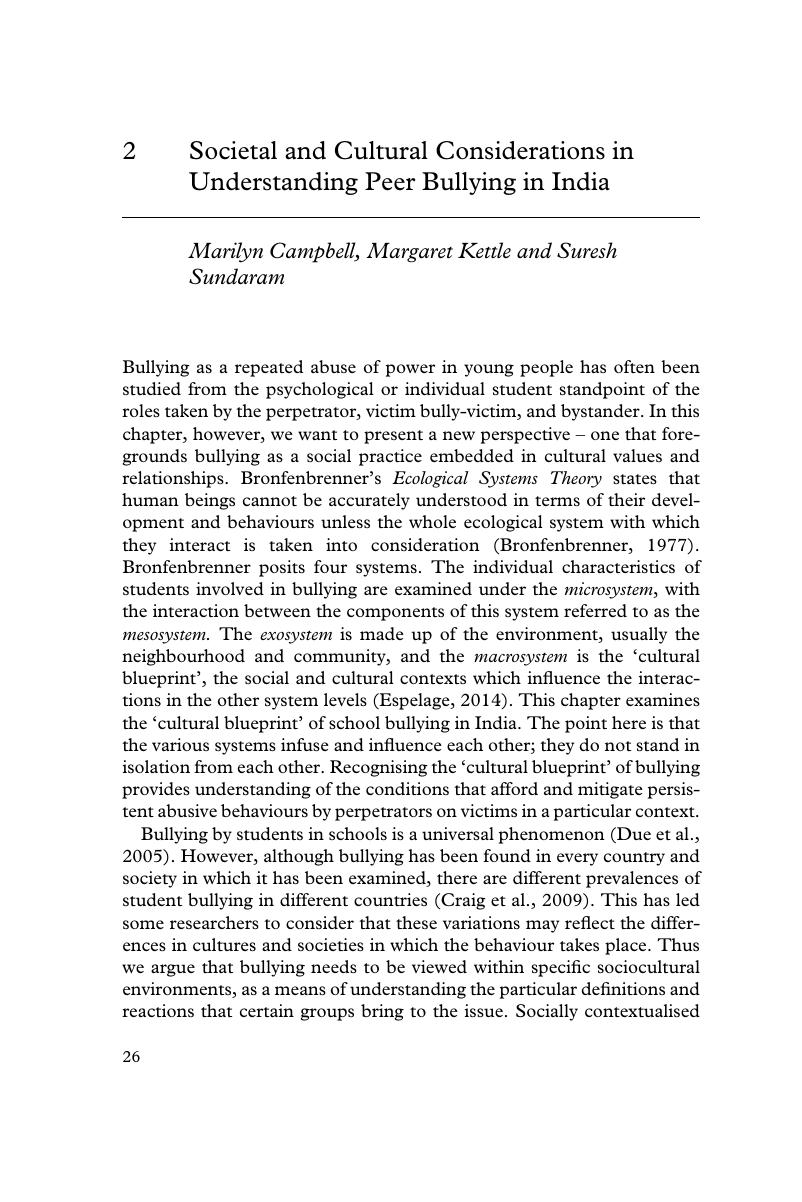 Bullying, Cyberbullying and Student Well-Being in Schools
Bullying, Cyberbullying and Student Well-Being in Schools Book contents
- Bullying, Cyberbullying and Student Well-Being in Schools
- Bullying, Cyberbullying and Student Well-Being in Schools
- Copyright page
- Contents
- Figures
- Preface
- Part I Issues in Studying Cross-National Differences
- 1 Introduction
- 2 Societal and Cultural Considerations in Understanding Peer Bullying in India
- 3 Bullying or Peer Aggression?
- 4 Issues in Cross-National Comparisons and the Meaning of Words for Bullying in Different Languages
- Part II Comparative Data on Bullying
- Part III Working with Students and Teachers
- Part IV Commentaries from North America
- Index
- References
2 - Societal and Cultural Considerations in Understanding Peer Bullying in India
from Part I - Issues in Studying Cross-National Differences
Published online by Cambridge University Press: 10 May 2018
- Bullying, Cyberbullying and Student Well-Being in Schools
- Bullying, Cyberbullying and Student Well-Being in Schools
- Copyright page
- Contents
- Figures
- Preface
- Part I Issues in Studying Cross-National Differences
- 1 Introduction
- 2 Societal and Cultural Considerations in Understanding Peer Bullying in India
- 3 Bullying or Peer Aggression?
- 4 Issues in Cross-National Comparisons and the Meaning of Words for Bullying in Different Languages
- Part II Comparative Data on Bullying
- Part III Working with Students and Teachers
- Part IV Commentaries from North America
- Index
- References
Summary

- Type
- Chapter
- Information
- Bullying, Cyberbullying and Student Well-Being in SchoolsComparing European, Australian and Indian Perspectives, pp. 26 - 44Publisher: Cambridge University PressPrint publication year: 2018
References
- 4
- Cited by


